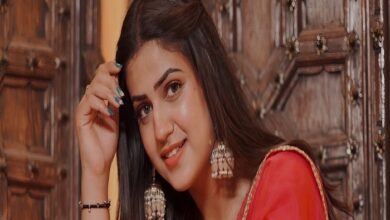Beautiful Rangoli Designs: Traditional Art with a Modern Twist

Rangoli Designs: A Cultural Symbol of Color and Celebration
Rangoli designs are more than just decorative patterns—they are cultural expressions of joy, spirituality, and tradition. Found in Indian households during festivals like Diwali, Pongal, and Onam, rangoli designs are made using colorful powders, flower petals, or even grains. These intricate patterns are meant to bring good fortune and ward off evil, showcasing the rich heritage of Indian artistry.
In every Indian region, rangoli designs take on unique characteristics—from geometric patterns in Tamil Nadu to floral motifs in Maharashtra. Rangoli designs reflect regional diversity and individual creativity, passed down through generations as a form of storytelling and expression. The significance of rangoli designs lies not only in their beauty but also in the unity they symbolize, as communities come together to celebrate festivals.
Today, rangoli designs are evolving with time, incorporating modern aesthetics while retaining their cultural core. With digital inspiration and social media sharing, rangoli designs have become a creative outlet for artists of all ages. They’re a celebration of Indian traditions in a vibrant, visual form that continues to enchant and inspire.
Traditional Rangoli Designs That Never Go Out of Style
Traditional rangoli designs have stood the test of time, with roots dating back to ancient Indian scriptures. These rangoli designs often feature symmetrical patterns like lotus flowers, peacocks, and religious symbols such as Om, Swastika, or Kalash. Created using natural powders like rice flour, turmeric, and vermilion, traditional rangoli designs are eco-friendly and spiritual in nature.
In states like Andhra Pradesh and Karnataka, traditional rangoli designs—locally known as Muggulu or Kolam—are drawn at the entrance of homes daily. These rangoli designs signify purity, hospitality, and prosperity. Women wake up early in the morning to draw these sacred patterns, enhancing the aesthetic value of their surroundings.
Traditional rangoli designs are also prominent during festivals. During Diwali, families compete to create the most beautiful rangoli designs as part of the celebration. With the intricate curves and motifs of these rangoli designs, the art form serves as a meditative practice as well. Traditional rangoli designs continue to inspire the new generation with their timeless appeal.
Modern Rangoli Designs for Contemporary Celebrations
As lifestyles change, modern rangoli designs have emerged to adapt to fast-paced living. These rangoli designs use materials like acrylic paints, stencils, and LED lights to create visually appealing patterns quickly and easily. Modern rangoli designs combine innovation with tradition, making them perfect for urban homes and compact spaces.
The beauty of modern rangoli designs lies in their versatility. From 3D effects to abstract themes, these rangoli designs break away from conventional formats. You can even find rangoli designs made entirely of floating flowers in bowls or glass containers for a chic and minimalist look. These rangoli designs suit various occasions, including weddings, housewarmings, and birthday parties.
Social media platforms like Pinterest and Instagram are full of inspiration for modern rangoli designs. DIY tutorials and time-lapse videos have made it easier than ever to recreate these rangoli designs at home. With bold colors and creative shapes, modern rangoli designs are all about pushing artistic boundaries while keeping cultural roots intact.
Easy Rangoli Designs for Beginners and Kids
If you’re just starting your artistic journey, easy rangoli designs are the perfect way to get involved. These rangoli designs usually involve simple shapes like circles, dots, and lines. They require minimal effort and materials, making them ideal for school events, classroom decorations, or home entrances.
One of the simplest rangoli designs involves creating a grid of dots and connecting them to form symmetrical shapes. These rangoli designs not only enhance fine motor skills in kids but also encourage patience and creativity. Easy rangoli designs also come with templates and stencils that help children learn the fundamentals of this art.
For special occasions like Diwali or Republic Day, easy rangoli designs can be themed to reflect the holiday spirit. Using flower petals or colored salt makes the process mess-free and enjoyable for young artists. Introducing rangoli designs at an early age helps preserve cultural heritage in a fun and engaging manner.
Rangoli Designs for Diwali: Brighten Your Festivities
Diwali is incomplete without vibrant rangoli designs gracing the entrance of every home. These rangoli designs are not just decorative; they are auspicious symbols meant to welcome Goddess Lakshmi, the deity of wealth and prosperity. Diwali rangoli designs often feature lamps, diyas, and floral motifs to enhance the festive ambiance.
You can choose from a variety of rangoli designs for Diwali, ranging from simple patterns to elaborate masterpieces. Some popular Diwali rangoli designs include peacock motifs, symmetrical mandalas, and traditional symbols like Lakshmi’s footprints. These rangoli designs are usually created using vibrant rangoli powders and embellished with glitter, beads, and diyas.
Many families host rangoli competitions during Diwali, showcasing innovative ideas and unique color combinations. These events make rangoli designs a central part of community bonding and cultural appreciation. When you craft rangoli designs during Diwali, you not only elevate your home’s aesthetic but also honor a deeply rooted Indian tradition.
Flower Rangoli Designs: Natural Beauty Meets Art
Among the most visually stunning variations are flower rangoli designs, made using fresh petals of marigold, rose, jasmine, and chrysanthemum. These rangoli designs bring a fragrant and organic charm to events like weddings, Onam, and temple celebrations. Their biodegradable nature makes flower rangoli designs eco-conscious as well.
Creating flower rangoli designs requires a bit of planning, especially in terms of color contrast and petal size. Popular patterns include concentric circles, geometric arrangements, and deity representations. Some flower rangoli designs are complemented with leaves, grains, and candles to add texture and depth.
Flower rangoli designs have gained popularity in South India, especially during Onam, where a specific form called Pookalam is made over a span of ten days. These rangoli designs symbolize prosperity and devotion, turning any celebration into a visual feast. With flower rangoli designs, nature and creativity come together in harmonious elegance.
Digital and 3D Rangoli Designs: The Future of Festive Art
As technology integrates into all aspects of life, digital and 3D rangoli designs are carving a niche for themselves. These rangoli designs use computer-generated imagery or 3D drawing tools to create intricate and realistic-looking patterns. Often projected or printed, these rangoli designs are ideal for large-scale events or indoor functions.
In corporate events, malls, and exhibitions, digital rangoli designs are used to impress guests without the mess of traditional materials. With the help of LED lights and projectors, these rangoli designs can even animate, adding a futuristic vibe to traditional art. 3D rangoli designs also involve using perspective drawing techniques to create depth and dimension, making the artwork pop out to viewers.
These modern innovations don’t replace traditional values but offer a new medium for expression. Digital rangoli designs are now being used in virtual greeting cards and social media campaigns. Whether it’s for branding or personal expression, digital rangoli designs show how ancient art can evolve with modern creativity.
Tips for Creating Stunning Rangoli Designs at Home
Creating rangoli designs doesn’t require professional skills—just a bit of creativity, patience, and planning. Start by selecting a design that matches the occasion. Whether you’re going for a traditional rangoli design or a modern twist, having a clear layout in mind is essential.
Use chalk or a white pencil to sketch the basic structure before filling in with colors. For vibrant rangoli designs, use high-quality rangoli powders or natural substitutes like turmeric, rice flour, and flower petals. To make rangoli designs more dynamic, consider adding embellishments like diyas, beads, or mirrors.
When creating rangoli designs for children or beginners, simplify the shapes and reduce the color palette to avoid overwhelm. Practice regularly to improve your symmetry and precision. You can also explore digital platforms or apps for rangoli designs that offer step-by-step tutorials and templates. The more you experiment, the more your rangoli designs will evolve in style and complexity.
Conclusion
Rangoli designs are a celebration of Indian culture, combining beauty, creativity, and tradition. Whether it’s a simple pattern made of dots or a grand floral arrangement at a wedding, rangoli designs continue to play a vital role in festivals and daily life. They serve as a bridge between generations, reminding us of our roots while allowing room for innovation.
By exploring various forms—traditional, modern, digital, and eco-friendly—rangoli designs adapt to changing times without losing their essence. Sharing your rangoli designs with family, friends, and social media audiences can inspire others to take part in this timeless tradition.
So, gather your colors, petals, and imagination. Whether you’re a beginner or a seasoned artist, rangoli designs offer endless opportunities for self-expression and cultural pride.
FAQs
1. What are the most popular types of rangoli designs?
Popular types of rangoli designs include traditional motifs, floral designs, geometric patterns, and digital or 3D rangoli designs.
2. Which materials are best for making rangoli designs at home?
For rangoli designs, you can use colored powders, rice flour, flower petals, chalk, and even eco-friendly materials like pulses or grains.
3. Are there apps or websites to find rangoli designs for festivals?
Yes, several apps and websites offer templates, video tutorials, and AI-generated rangoli designs for Diwali, Pongal, and more.
4. How can kids learn to make rangoli designs easily?
Kids can start with dot-based rangoli designs, use stencils, and practice using flower petals or chalk for simple, mess-free patterns.
5. Can rangoli designs be used for purposes other than festivals?
Absolutely! Rangoli designs are used for weddings, birthdays, housewarmings, and even corporate events to add a festive and artistic touch.





